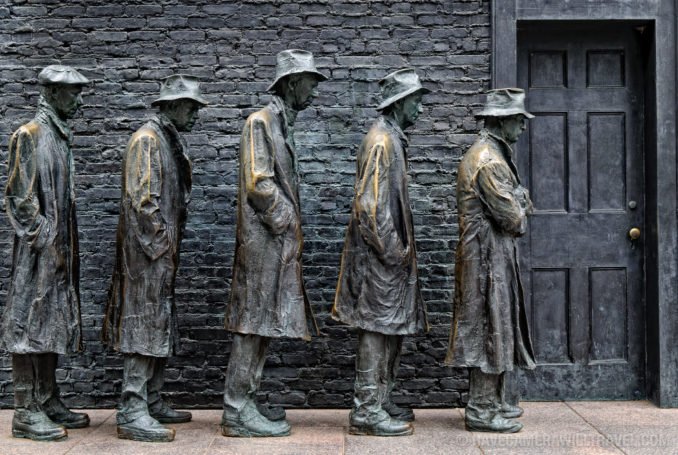
photo: © David Coleman [Great Depression FDR Memorial – Washington DC]
This section is not meant to review the evolution of economic thought. By no means. What I want to try to do is give a rough outline of the basic beliefs behind the economic system that has prevailed in the USA and Western Europe over the past four decades. To what extent this paradigm has been successful, will be dealt with in the next section, “God bless America”.
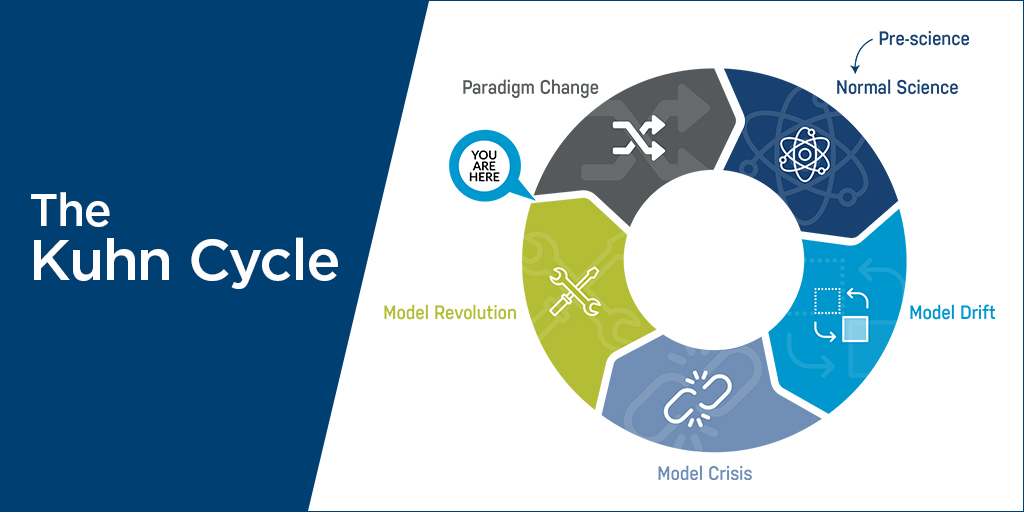
“Philosopher of science Thomas Kuhn defines a scientific paradigm as an epistemological pattern, a mental framework that specifies a series of what’s and how-to’s: what is to be observed and scrutinized, and by implication what is to be overlooked; the kind of questions that are supposed to be asked or ignored; how these questions are to be structured; how the results of scientific investigations should be interpreted. A paradigm, according to Kuhn, adjusts over time to the everyday requirements of what he calls “normal science,” i.e., the business of tinkering with models and making them fit empirical data as well as possible, for as long as possible. The period of normal science is sometimes ended, more or less abruptly, by a “scientific revolution.” [Bernard Lietaer et al. “Money – Sustainability: the missing link”].
In summary: an economic paradigm is a set of basic principles & beliefs that describe how an economy works or should work. Such paradigms define economic and political objectives, they involve the analytical frameworks that lead to explanations of the practical functioning of economic and social policies.
“The ideas of economists and political philosophers, both when they are right and when they are wrong are more powerful than is commonly understood.
Indeed, the world is ruled by little else.
Practical men, who believe themselves to be quite exempt from any intellectual influences, are usually slaves of some defunct economist.”
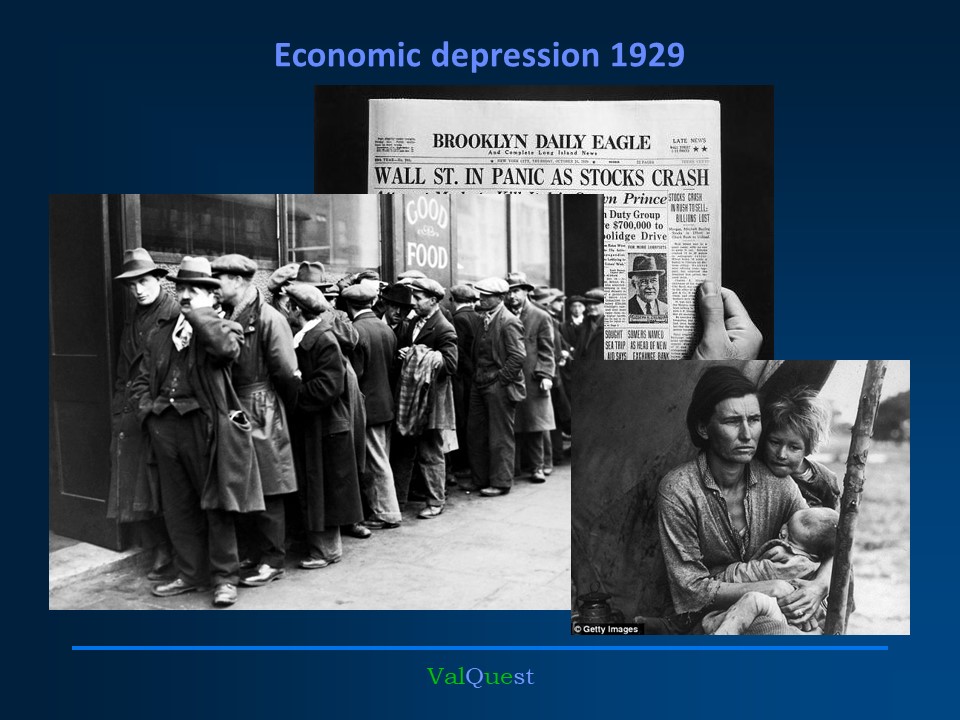
In the past century, there have been two major economic paradigm shifts in Western societies. The first one happened after the Wall Street crash of 1929 and involved the transition from “laissez-faire” to “Keynesian economics” with a strong role for governments in regulating and stimulating the economy.
The second shift was triggered a.o. by high inflation, exploding costs of social policies, and the “oil shocks” of the 1970s and led to the currently still dominant paradigm of “neo-liberalism”.
Each transition features a crisis: the prevailing paradigm gets stuck, no longer works and new, successful approaches emerge that better explain reality. The prevailing paradigm however can have disproportionate staying power due to vested interests. But also the complexity of the international economic reality, the deep global interconnectedness, help the vested interest to frustrate a paradigm shift.
In the years leading up to 1929, the Wall Street stock market offered the potential for becoming rich the fast way – it was the new gold rush. The market crash on the 29th of October that year was a result of the irrational exuberance of investors, many buying shares with borrowed money. The collapse led to a severe depression with 1 of 4 Americans out of work. But the crash had a worldwide effect.
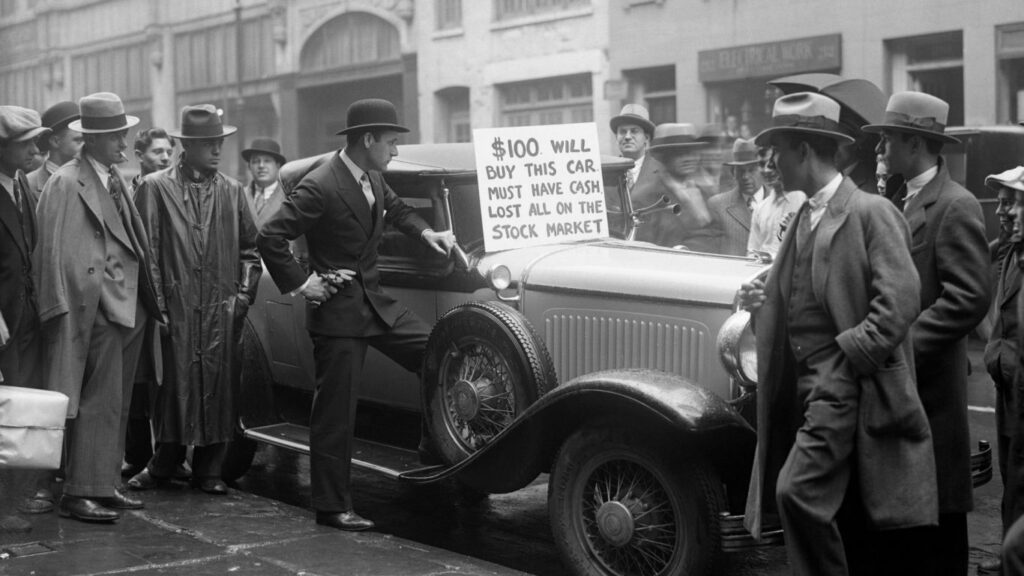
It was this president [from 1933 – 1945] who was confronted with the severest of economic disasters in US history. He turned to Keynesian economics to address the formidable challenges.
Keynes advised sharply increased government spending and lower taxes. His theory focused on using active government policies, interfering in markets to stimulate consumer demand and thus pulling the economy out of the depression. A whole array of programs [building infrastructure, dams, parks, etc.] formed the “New Deal”, FDR´s plan for recovery. In the end, it was the gigantic war production of 1941 – 1945 that pulled the economy definitely out of the depression.
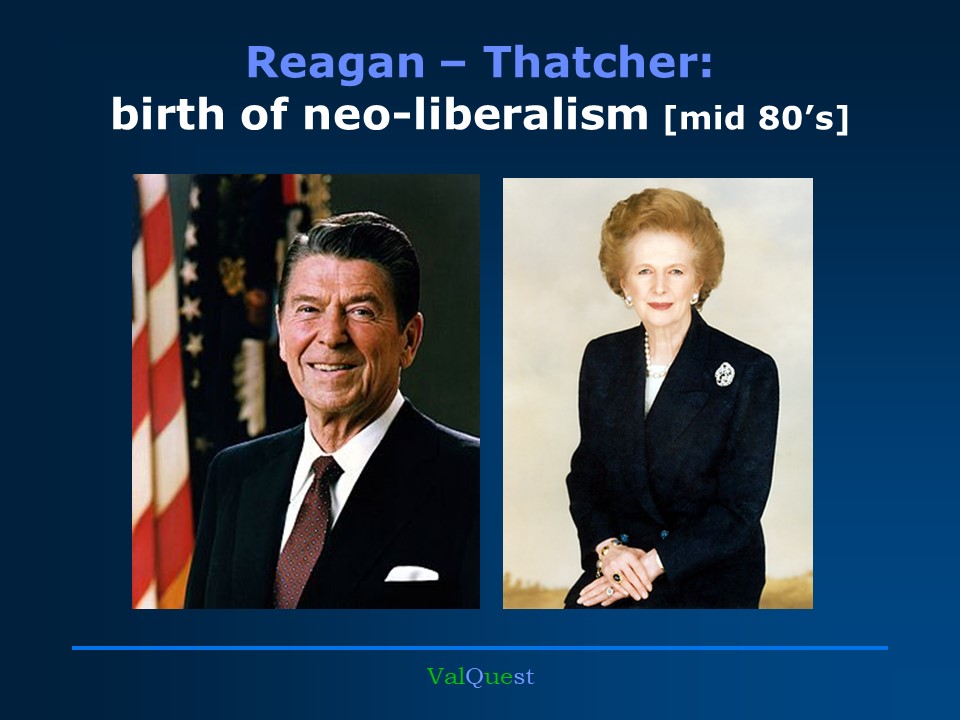
The elections of Margaret Thatcher [UK – 1979] and Ronald Reagan [the USA – 1981] marked the emergence of a new paradigm. It also happened in the rest of North-western Europe. The role of the state in facilitating the economy was drastically diminished. Important public organizations [rail transport, water supply, postal and telecom services, i.a.] were privatized. Significant reductions in taxes and public spending were implemented. Markets were deregulated, especially the international financial markets. Trade unions were curtailed. This was the new paradigm: neo-liberal economics.
On 15 April 2016, in The Guardian, George Monbiot wrote his review of the neo-liberal economic ideology that has dominated much of the world since the mid-1980s.
It perfectly reflects my views, and I don’t wish to sum it up.
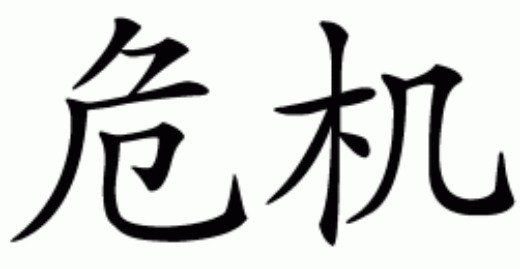

This website is a personal narrative, based on 50 years experience in international business, non governmental organisations and consulting practise. My guest lectures at the Institute of Environmental Sciences [Leiden University, The Netherlands] are derived from it.
Ludo van Oyen – Brussels, 2021
Some photos are taken from the web. If you think your photo is used and you disagree, please send me an e-mail and I will remove it from this site.